Lying atop a hill dominating the Bosporus to the north of the Golden Horn, the “European city” of Pera grew up in the middle of the nineteenth century. A place where earlier one could find the shop counters of Genoese merchants, the architecture of Beyoglu, as the Turks call it, is western. Its grand structures such as the covered passages, recall those of Paris, London, or Berlin. Western nationals, taking advantage of the privileges granted by the sultan to those doing business with the empire, settled here and were followed by a number of “minority” populations, including Greeks, Armenians, and Jews. The only remaining part of Istanbul that has no significant mosque, Pera is located across from Stambul, the old city on the other side of the Golden Horn. In contrast, one finds numerous Orthodox, Catholic, and Protestant churches close to its large street, today called Istikal Street.
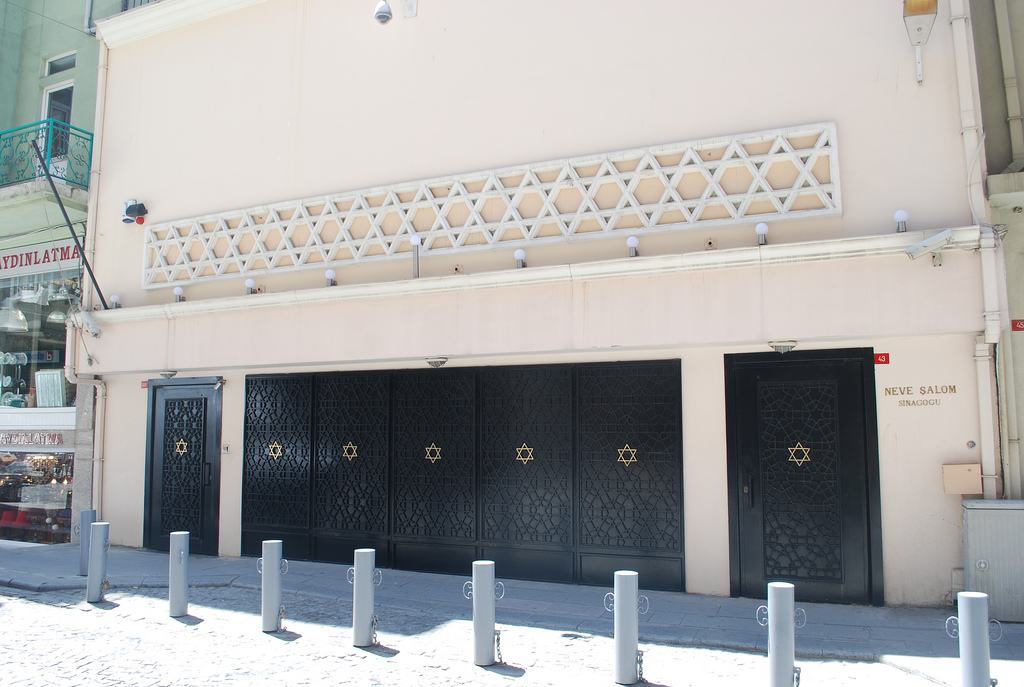
According to the travel guides from the era when this quarter became the sixth arrondissement of Istanbul in 1857, Beyoglu was an “extension of Europe” characterized by embassies, wine merchants and milliners, cabarets and theaters, luxury hotels such as the Pera-Palas, and Western-style educational institutions such as the Francophone Galatasaray. An intellectual, political, and diplomatic center of the cosmopolitan Ottoman capital in the last decades of the Empire, Pera was also the residential neighborhood of choice for elite Jews open to the ideas and models of the west. Connected by a subterranean funicular to Galata-Karaköy near to the passengers’ port on the Bosporus, Pera is also home of the Neve Shalom Synagogue, the largest synagogue still active. The Italian synagogue, and the administrative offices of the rabbinate are also located here.
The Neve Shalom Synagogue is situated on a small street near the famous Galata Tower (Galata Kulesi). It was built by Genoese in the fourteenth century in a lively quarter that is still at the center of Jewish life in Istanbul. Near the synagogue, one encounters typical Jewish homes of the period decorated with a Star of David on the pediment. The house at 50 Büyük Hendek Street is a good example. The houses at 5 and 7 Timarci Street have their date of construction engraved on a foundation stone calculated according to both the Hebrew and European calendars. A few of the last surviving grand homes typical of the Ladino way of life remain in this quarter. As Ilan Karmi notes in his guide to Istanbul, “Constructed around a central courtyard, these homes, commonly called yahudi hani (Jewish houses), could be comfortably inhabited by a large extended family or a congregation”. One of the best preserved houses of this type is located at 56 Serdari Ekrem Street.
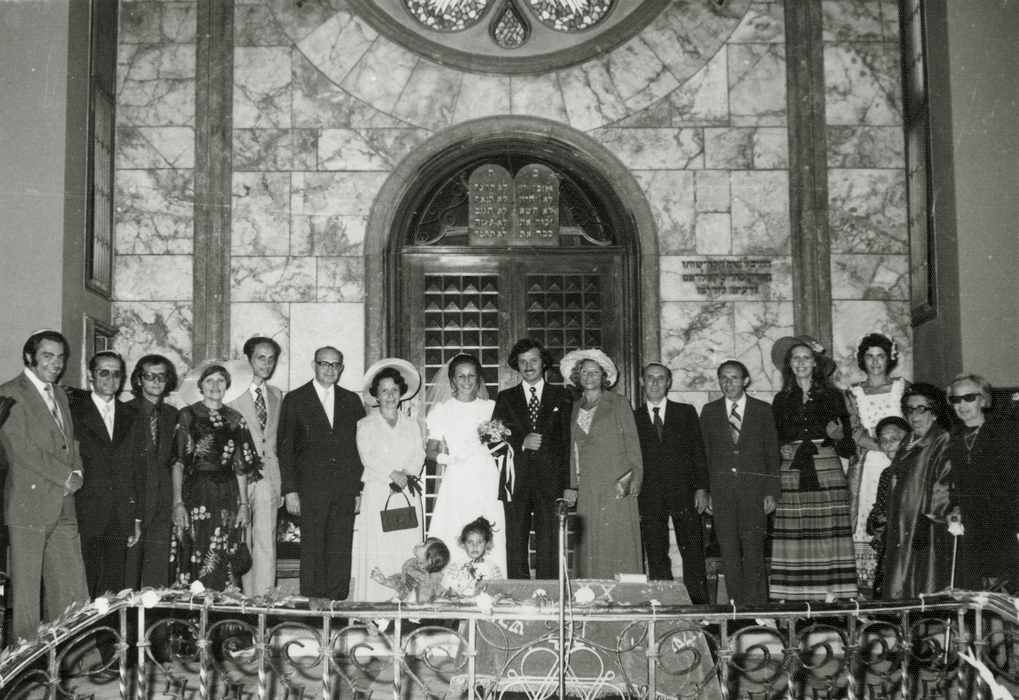
The Neve Shalom Synagogue , designed by the architects Elio Ventura and Bernard Motola, was built in 1951 on the site of a small prayer hall that it replaced. The elegant building has a large hall able to hold as many as 500 people and is decorated with a splendid rose window on the facade imported from Great Britain. Be sure to notice the magnificent woodwork on part of the walls
The tevah and aron are elevated and face the worshippers’ benches, as in most of European synagogues dating from the late nineteenth and twentieth centuries. In the entrance is a plaque recalling the terrible attack on 6 September 1986 that left twenty-three dead. Two Arab terrorists managed to enter the prayer hall during Shabbat services, and after killing the old shamash (the “bedaud”), who tried to stop them, opened fire on the congregation. The strong reaction of the Jewish community to the trauma remains acute; despite the solidarity shown by the authorities and the near-total support of public opinion. The synagogue was restored and reopened in May 1987. Each year, a special commemorative service is held for the victims.
Near the Neve Shalom Synagogue at 87 Büyük Hendek Street is the site of the former Knesset Israel Synagogue in what is now a sports club. A little further down the street is a Jewish elementary and high school complex constructed in 1915 during the war, when the Universal Israelite Alliance schools were not permitted to operate; as Francophone institutions, they were naturally the enemies of the Ottoman Turks allied with Germany.
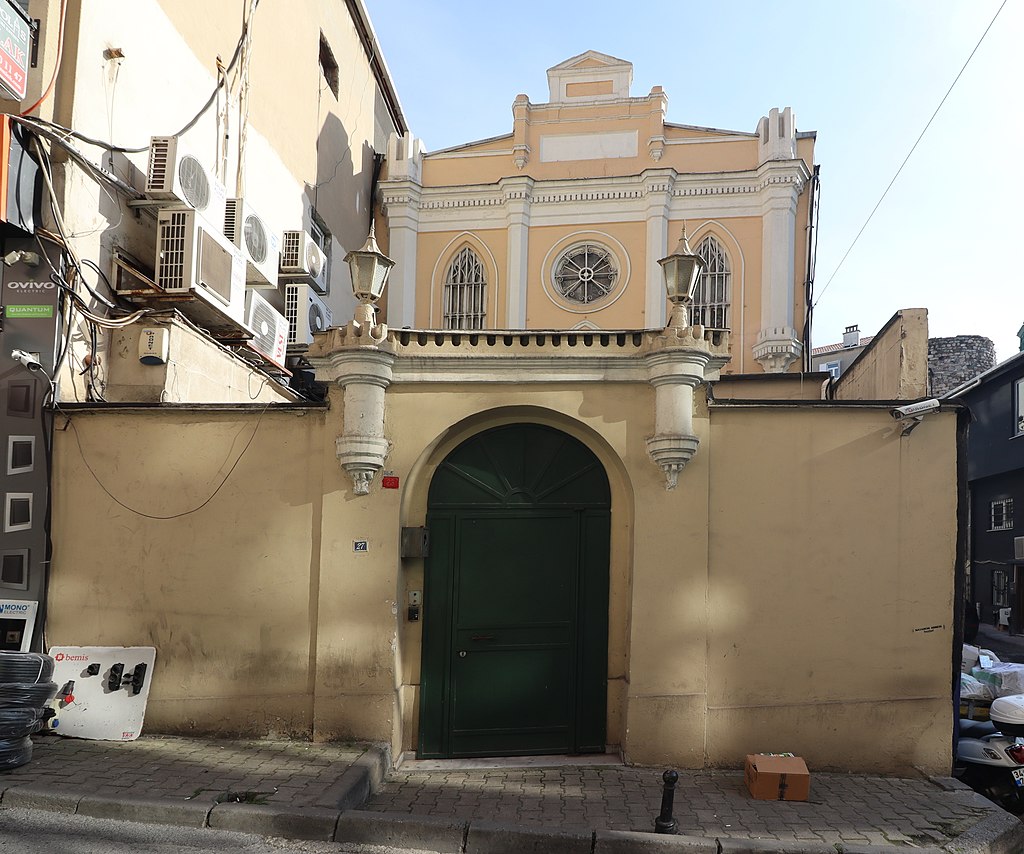
The Italian Synagogue is discreetly located in a harmonious building behind the wall of a small courtyard. Largely remodeled in the early 1930s, the design preserves the original structure dating from 1887. The centuries-old presence of Italian Jews in the Ottoman capital is attested by the memory of the ancient synagogues of Puglia (Apulia) and Messina, which have since disappeared. In 1866, the Italian Jews separated from the rest of the Jewish community, which they judged to be too traditionalist. Supported by the Italian embassy, they obtained the right from Sultan Abdulaziz to form an autonomous congregation, similar to what already existed for the Ashkenazic community and the Karaites. The facade of the synagogue is restrained but harmonious with its rectangular pediment and brick double staircase leading to the entrance. The prayer hall is painted completely white and surrounded by the women’s gallery on the second floor. Today the Italian community numbers only a few hundred faithful.
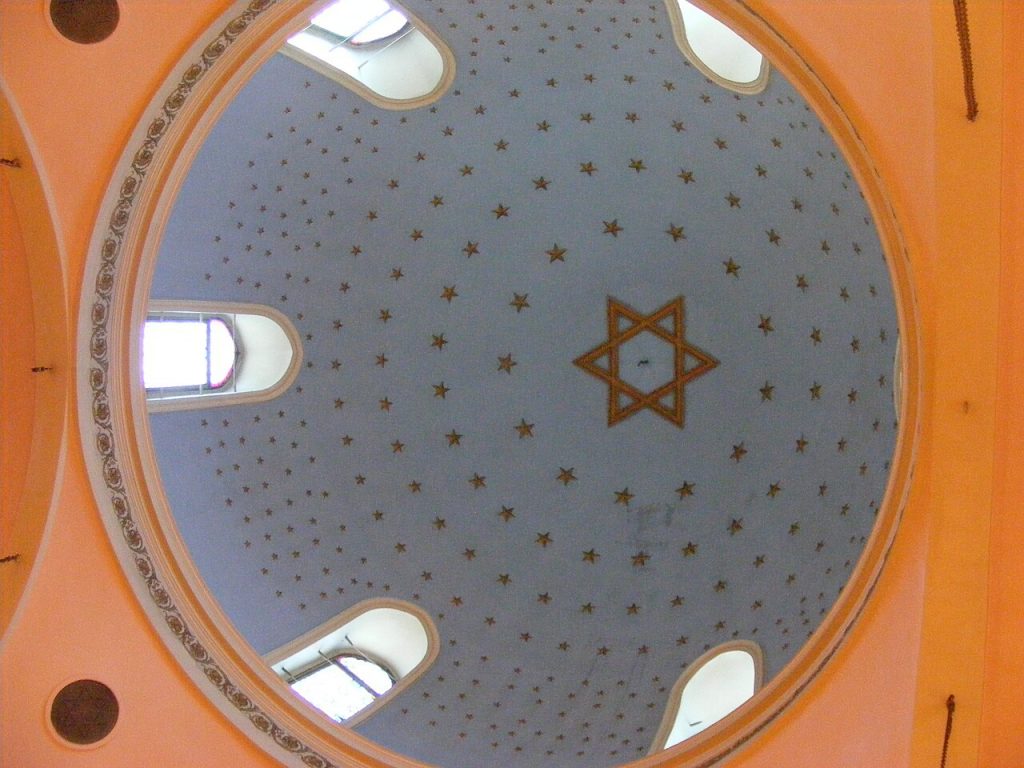
Imposing and rather austere from the outside, the Ashkenazic Synagogue stands in the middle of the large street connecting Pera to the lower section of the Galata neighborhoods near the Bosporus. This area is the former banking and financial section of the city, revealed by the names of the streets (Bankarlar Street, for example). In the nearby Voyvoda Street, above the sumptuous staircases that he had constructed, you will find the neighborhood of the great financier Abraham de Camondo. The current synagogue, called the German Hebrew Synagogue according to the plaque on its facade, is the last of the city’s three Ashkenazic temples. It is located in an area where Jews from Hungary, Germany, and France settled beginning in the fourteenth century. Approximately 2000 Ashkenazic Jews live in Istanbul today.
The building was constructed in 1900 following a design by architect Gabriele Tedeschi. The beautiful facade is composed of three richly decorated grand arcades crowned by two domes. It recalls the facades of numerous synagogues built in the nineteenth century in cities of the Austro-Hungarian Empire by emancipated bourgeois Jews. And this is not accidental, since many of Istanbul’s Ashkenazim arrived here from Austria, Bohemia, and Hungary and remained Hapsburg subjects. The plaque at the entrance to the synagogue commemorates, among other things, the fiftieth birthday of Emperor Franz-Joseph, whose wife gave to the synagogue the magnificent aron made of carved alder and inlay and crowned by a wooden dome decorated with gold. The ensemble is of an obvious oriental style with carved wood decorations blending Hebew letters with plant motifs. The rectangular hall can hold 1000 people and is crowned with an azure dome flecked with golden stars. The women’s gallery extends on two floors. In all, the building has seven halls. Four are in the basement, which contains a dining area, the mikvah, Midrash, and a small room for morning prayers.
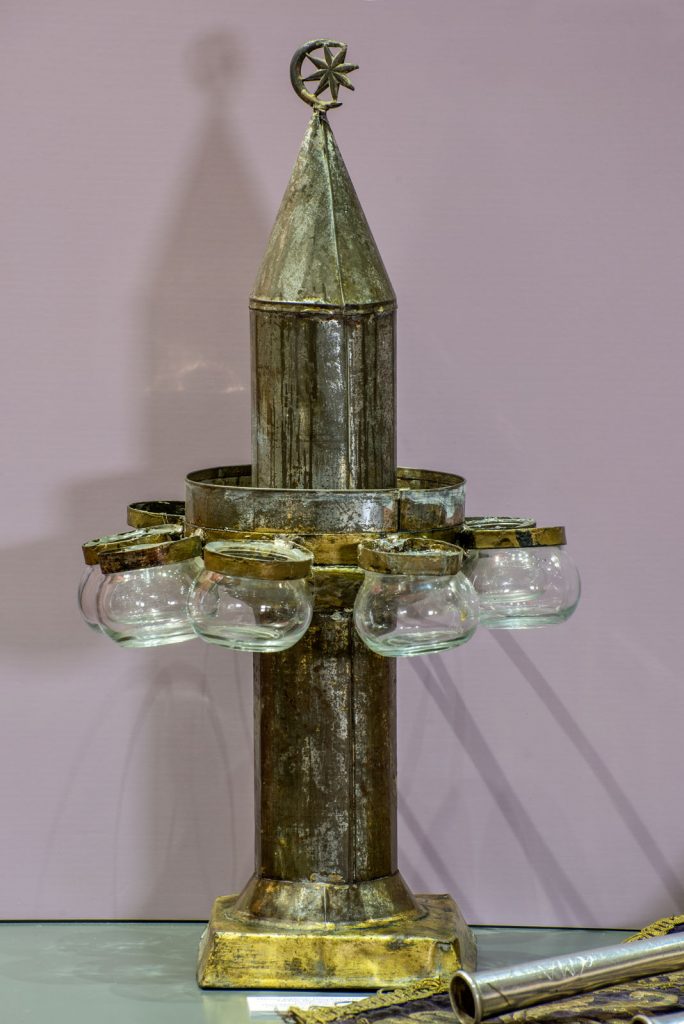
The Jewish Museum of Istanbul , used to be located in the Zulfaris Synagogue, at the end of a small street near the entrance to the funicular (tunnel) and the famous Galata Bridge at the mouth of the Golden Horn. Closed for more than ten years and reopened in 2000, the current building was remodeled in 1890 with a donation by the Camondo family and replaced most of the original edifice dating from the seventeenth century. The museum is located since 2016 near the Neve Shalom synagogue.
Like other synagogues of the “European city”, the Zulfaris Synagogue takes its inspiration from Western models of emancipated Judaism. The imposing marble aron has two arrows on the side and is neo-Gothic in style. It was conceived by one of the architects who constructed Saint Anthony, the Pera quarter’s large, beautiful Catholic church.
The lovely rectangular hall measures 50 ft. x 23 ft. Its second-floor gallery houses a permanent exhibition on the life and history of Turkey’s Jews. Naim Guleryuz, the museum curator and the community’s historian, explained: “We wanted to illustrate six centuries of harmonious existence and to show our fellow believers and others that the Jews of Turkey have actively participated in the life of this country”. Several Sifrei Torahs crowned with the crescent and star are on display, as well as religious objects, decorated with Ottoman symbols. You will discover in the display cases and on the walls examples of the flourishing Jewish and Ladino press from the end of the nineteenth and beginning of the twentieth centuries, as well as portraits of famous Jews of the time in diplomacy, the arts, and even the military. The museum gives information on Jewish scholars who fled Hitler’s Germany and found refuge in Turkey, as well as Turkish diplomats such as the consul of Rhodes, Salahattin Ülkümen, who saved many Jews during the war by giving them Turkish papers.